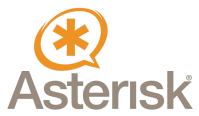Asterisk 1.8.0 is released to web
For those who don’t already know, Asterisk is widely regarded as THE open source IP PBX, it is extremely cost effective within smaller organisations (although perfectly capable within larger environments) and labs – I have previously written integration guides for both Microsoft Exchange and Lync (Asterisk is great as a low cost gateway for labs etc.)
Late last week Asterisk released the final or stable 1.8.0 version, the last major release being 1.6 which was released two years ago! For a high level overview of functionality see the list of new features below and expect some updated guides in the future…(likely to be based upon AsteriskNOW which is still being updated to 1.8.0)
Taken from Tom Keating’s blog:
- Secure real-time transport protocol (RTP) support—New end-to-end VoIP encryption of signaling and media to compliment the existing encrypted signaling support.
Steve explained SRTP support will be huge since it will allow for government and financial deployments of the Asterisk platform. - Security event framework—Modular capability for collecting and distributing security events within Asterisk.
- Extensive additions to ISDN-BRI functionality—Call completion services, connected party identification, ETSI advice of charge (AOC), message waiting indicator (MWI), call rerouting and call deflection.
- Session initiation protocol (SIP) changes—Substantial increase in the speed of registrations, transport layer security (TLS) improvements and more flexible network address translation (NAT) handling.
- IPv6 support—Although IPv6 has a slow uptake in the enterprise, at the carrier core, IPv6 is progressing very quickly. Steve mentioned that could be the initial place where IPv6 can be leveraged on the Asterisk platform. He said, “I suspect initially you’ll see it in the carrier and cable deployments. In fact, we have support now for PacketCable NCSbuilt into Asterisk as well, so those two goes nicely hand-in-hand. There are a lot of cable providers that are rolling out IPV6 for all the set top boxes and other devices that are attached to their network.” He added, “The other area IPv6 is big is Asia. There is a lot of IP underruns in Asia where there is billions of people with billions of devices. So it’s really caught on there. In a lot of ways that has been a gating factor for Asterisk deployments in Asia. But now that IPv6 is there, we’re expecting an even larger percentage of adoption.”
- Calendar integration—Support for Microsoft Exchange, CalDav and iCalendar. This is a pretty cool feature. If for instance your Calendar has you listed as in a meeting, Asterisk can automatically send the caller to your voicemail. Or if you are marked as ‘or Out of Office’ Asterisk can automatically forward to your cell phone.
- Channel event logging (CEL)—Enhanced call tracking and logging for better audit trail and billing purposes.
- XMPP distributed messaging—Better scalability for message waiting and device state.
- Improved internationalization and localization—Asterisk offers improved handling of concatenated audio playback (dates, numbers).
- Google Talk and Google Voice support—Inbound and outbound support for Google Talk and Google Voice calling. Google is serious about voice. Google is offering a free DID and free calling until the end of 2010 via Google Talk. So with the Google Talk integration, you essentially have a FREE trunk to make free calling on your Asterisk PBX. Take that Skype Connect!

- High-resolution timestamps for call data records (CDR)—Carrier and enterprise users can track call times to the microsecond.
- Better support for voice codecs—16 kHz signed linear media streams are now supported. Additional HD voice codecs supported. Siren 7 and Siren 14 codecs from Polycom are also now supported
- PacketCable NCS 1.0 support—Allows cable companies to use Asterisk as an option to create business services.
- Default de-noise for conference bridge calls—Conference calls will sound clearer.
- ConfBridge application enhancements—DAHDI hardware is no longer required to use this software feature. New call conferencing application that does not require the DAHDI kernel interface to operate.
- Pitch shift functions—The pitch of audio, including of callers’ voices, can be manipulated.
- Multicast RTP paging—Extremely efficient and scalable method for handset paging. Instead of sending an INVITE to 50 IP phones, you can leverage multicast to send a broadcast to the IP phones. Steve said Polycom, snom, and he said he thought Aastra phones supported this multicast feature. Multicast means a little more work for your switches and routers, but much less stress on the Asterisk server than the traditional way.
- Faster development and more robust unit testing—Digium has implemented Agile development and a new automated testing framework. The Agile process streamlines development and gives Asterisk users a better view into development plans.
To download the latest version head here.





